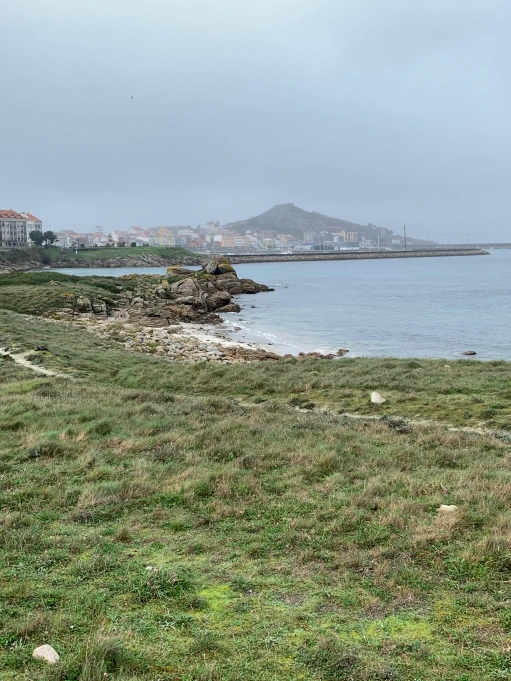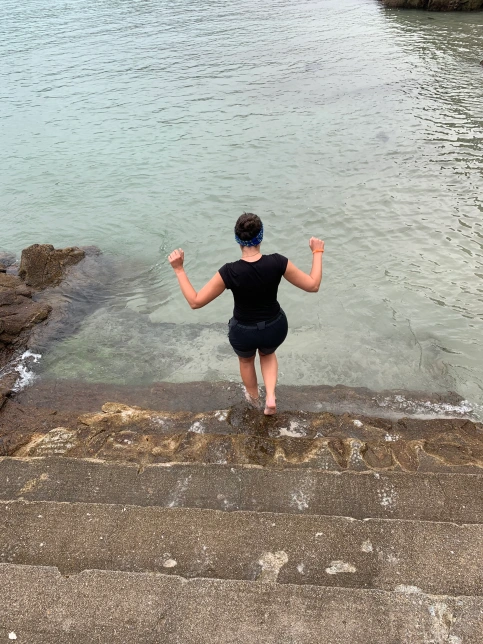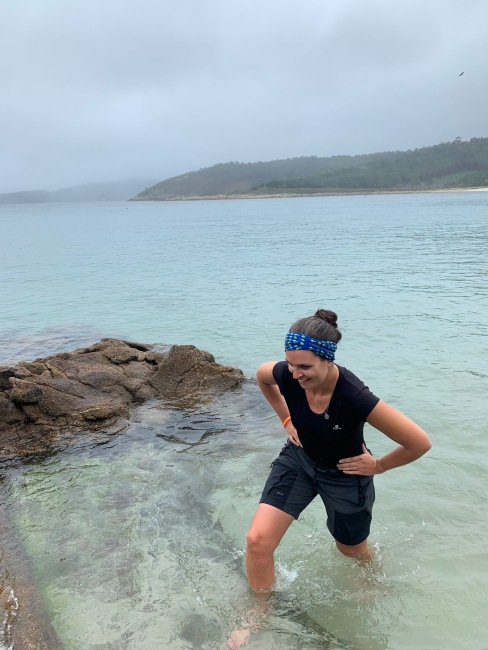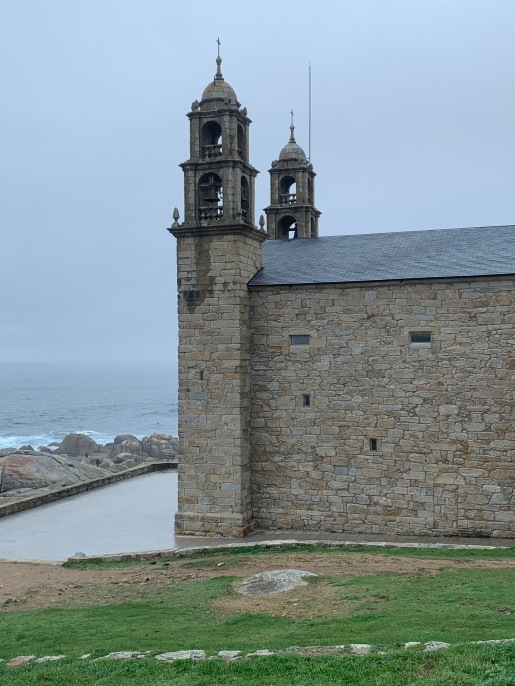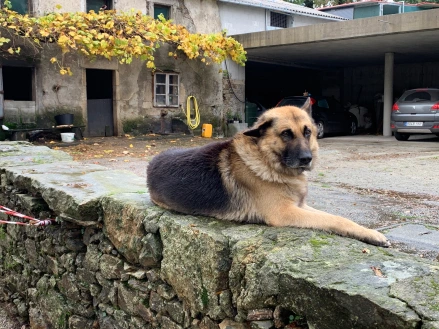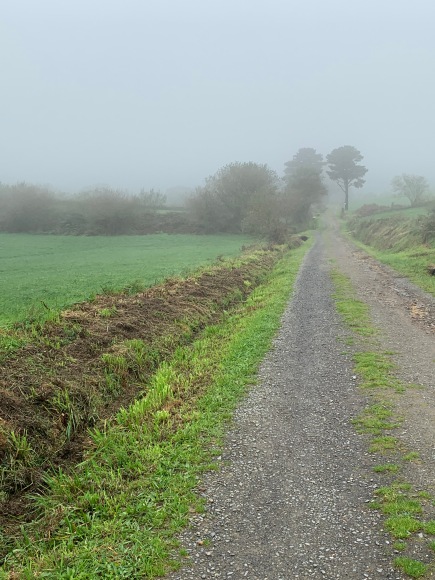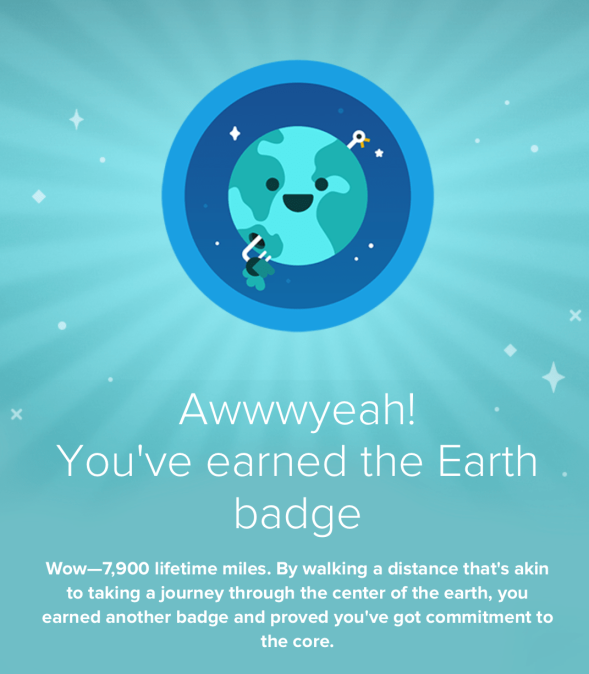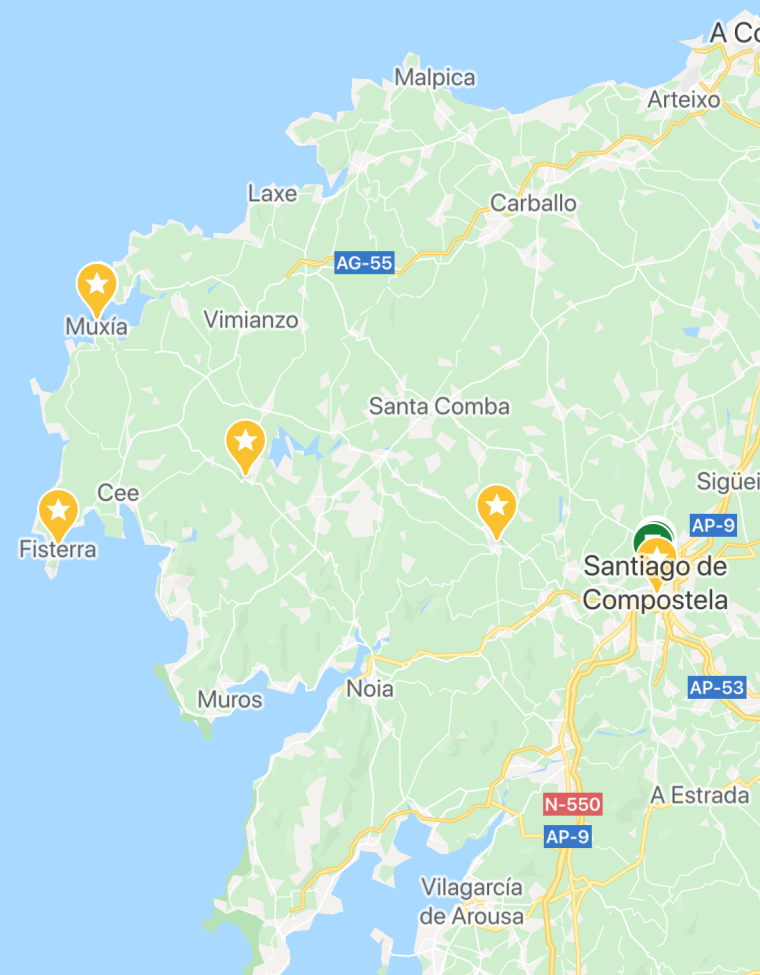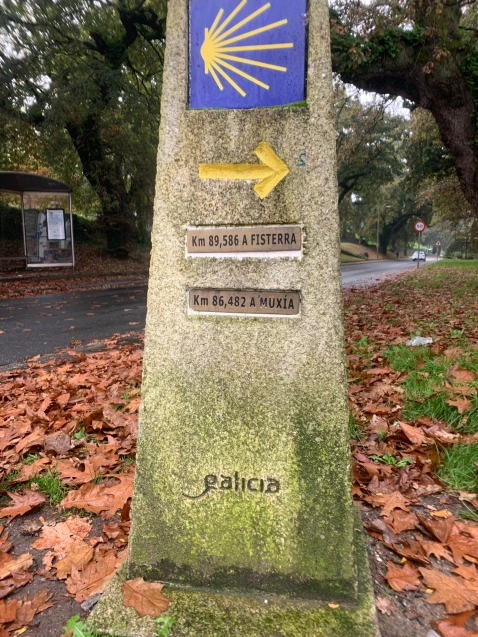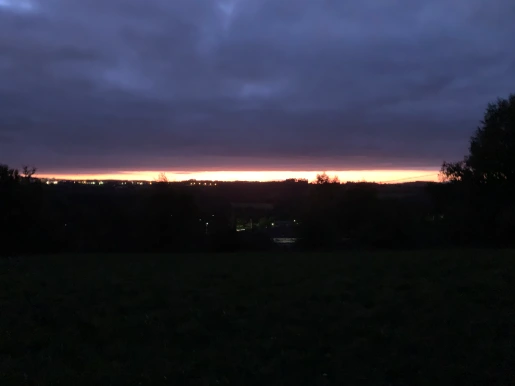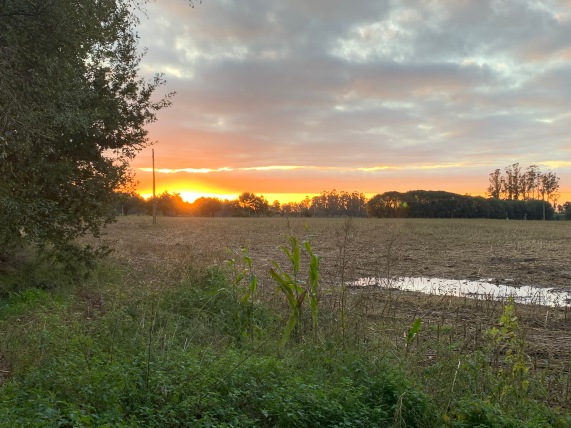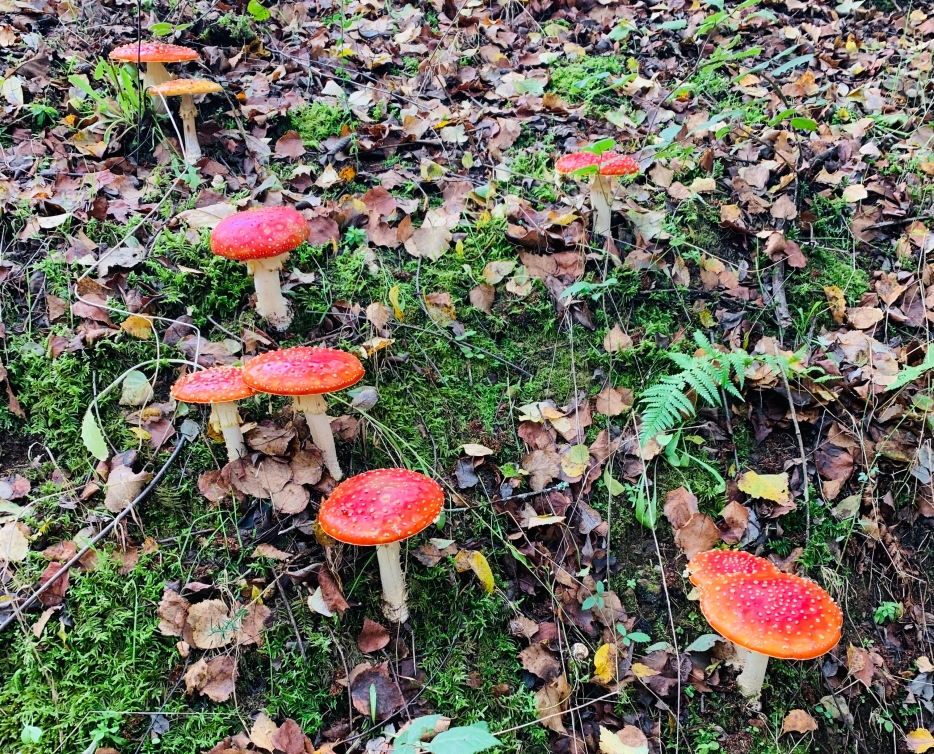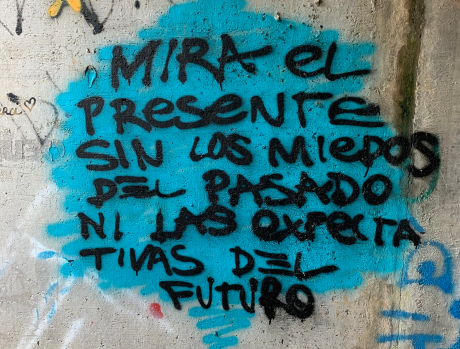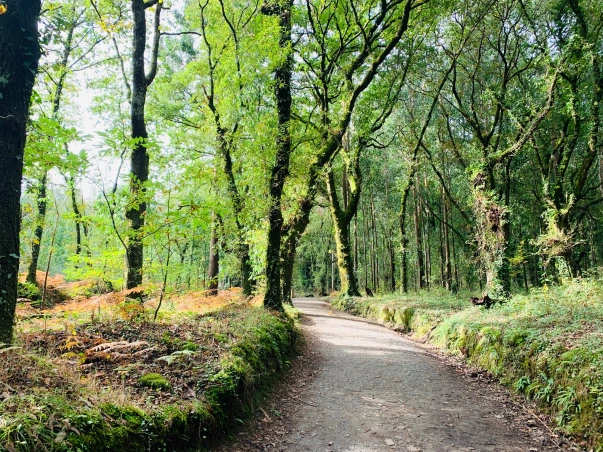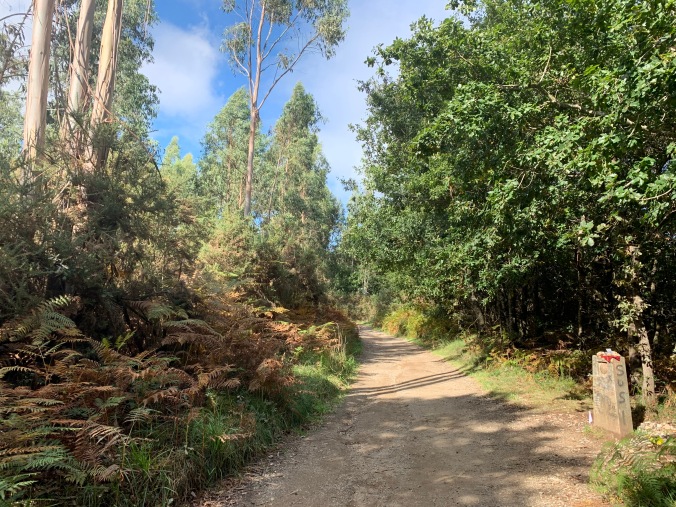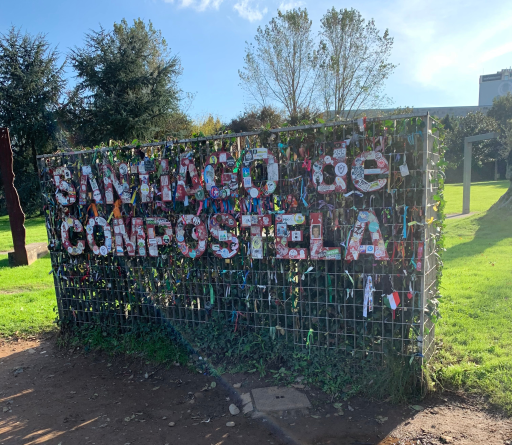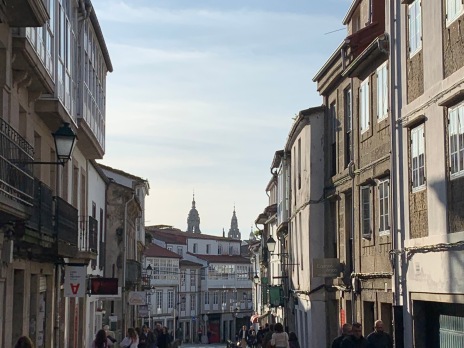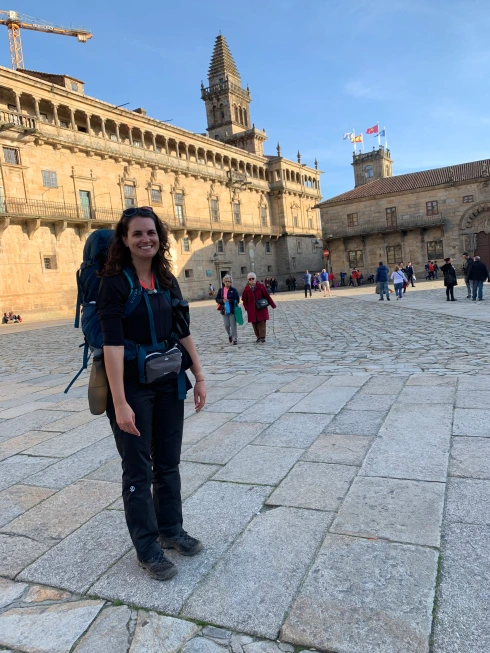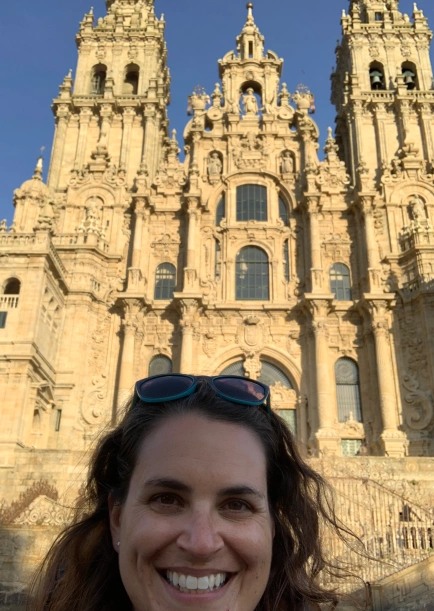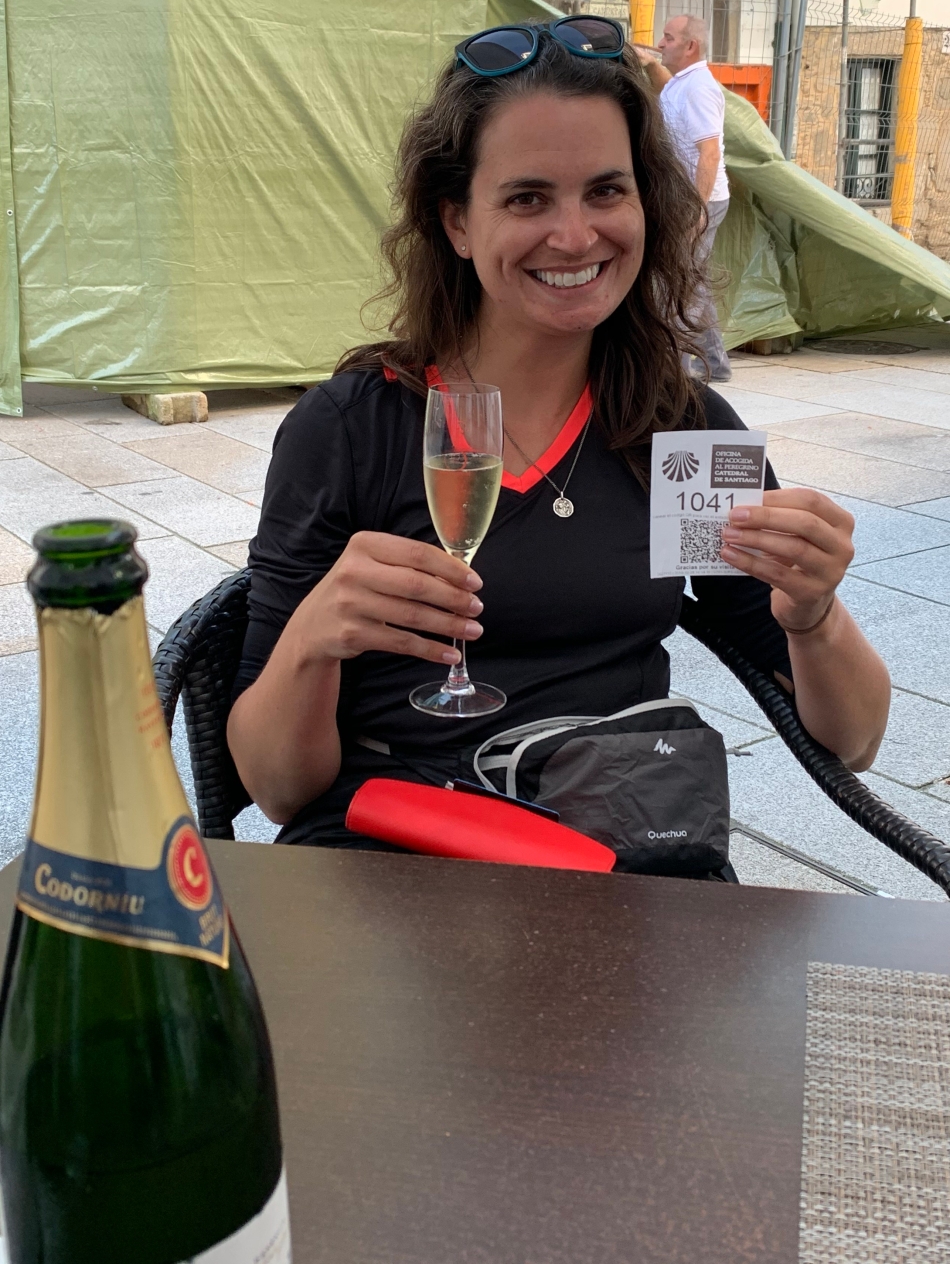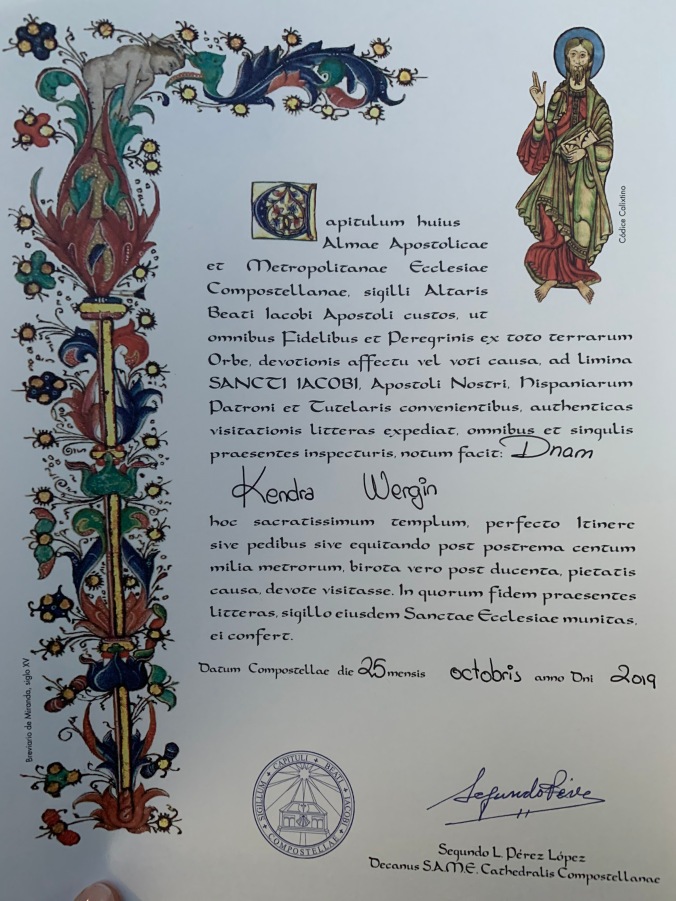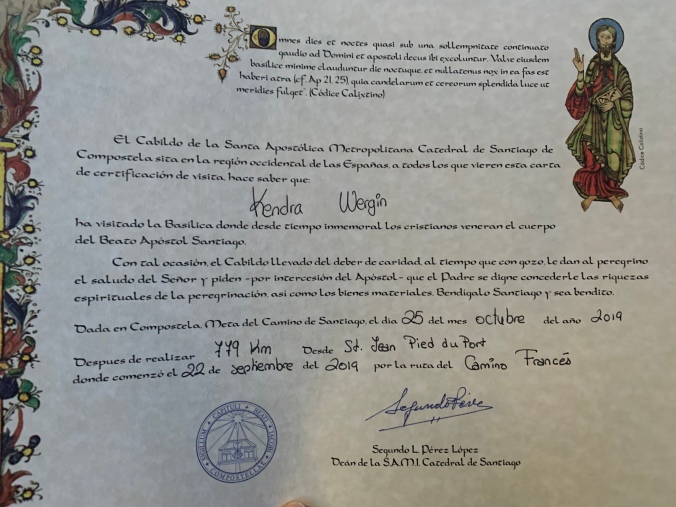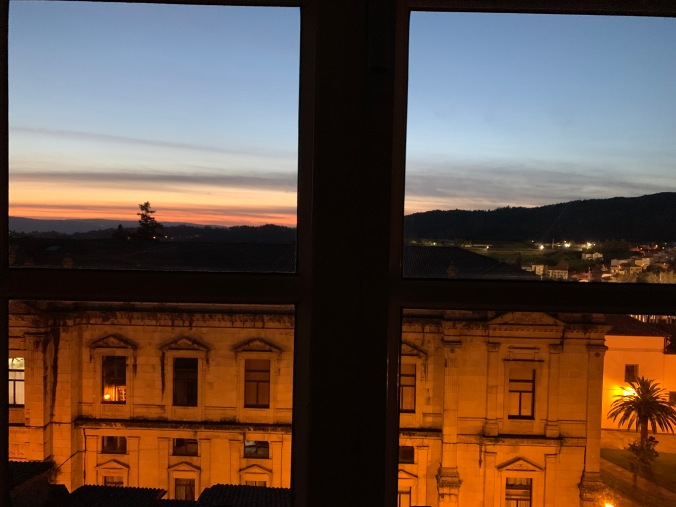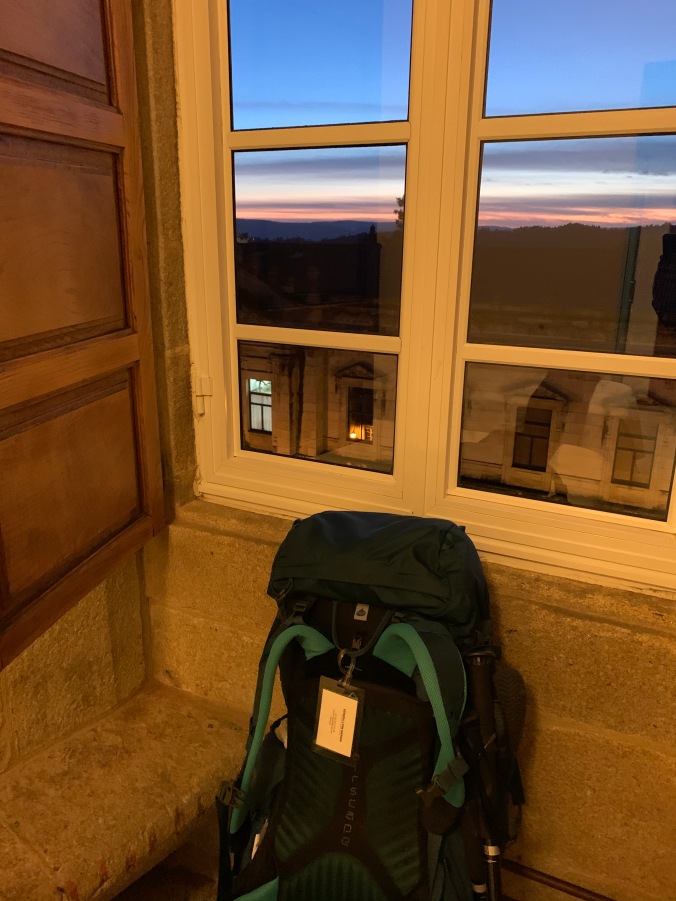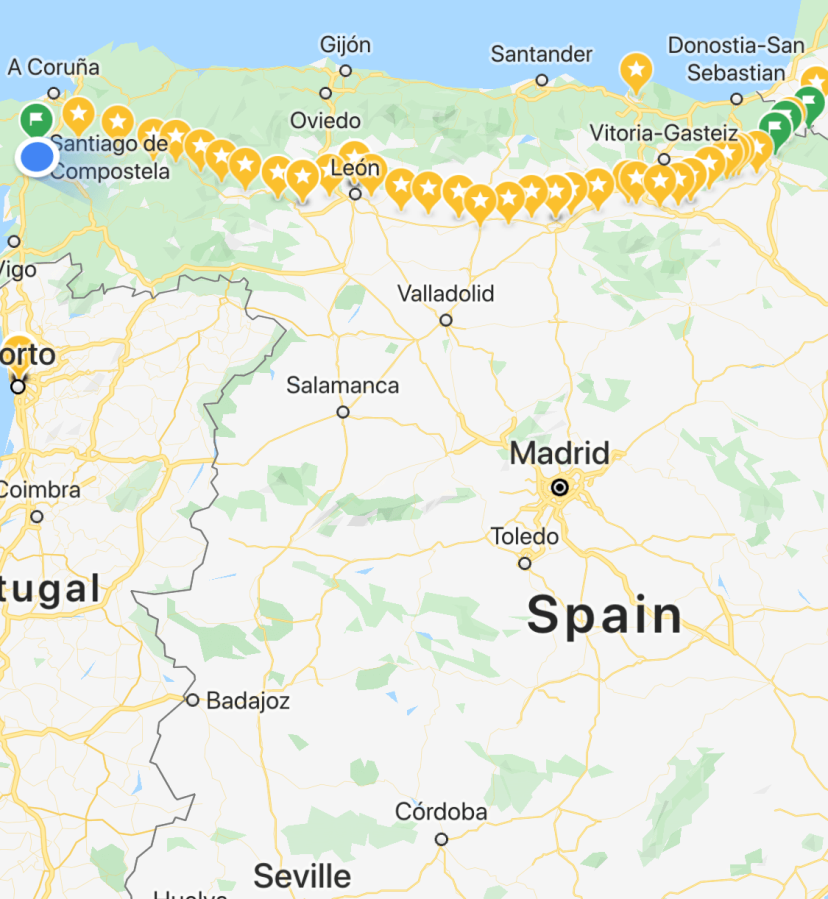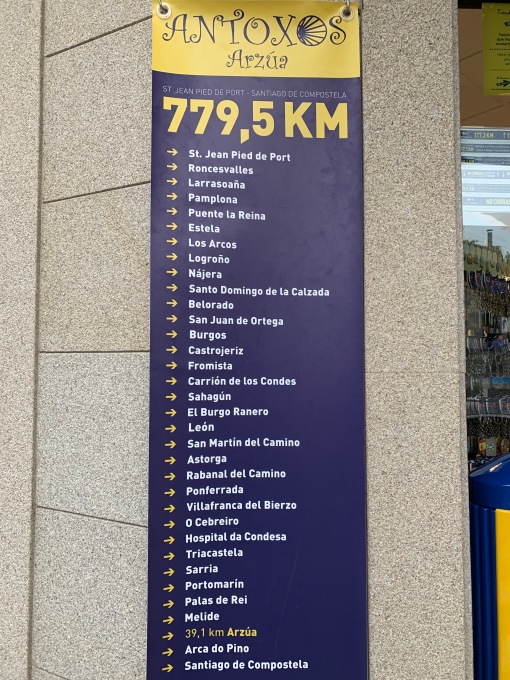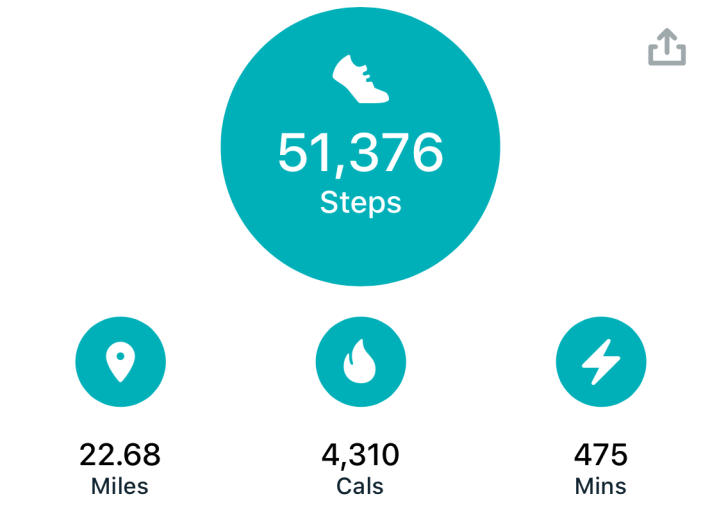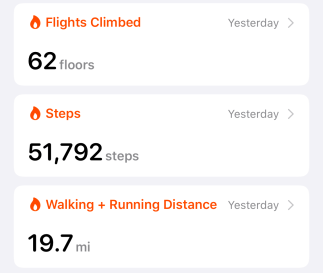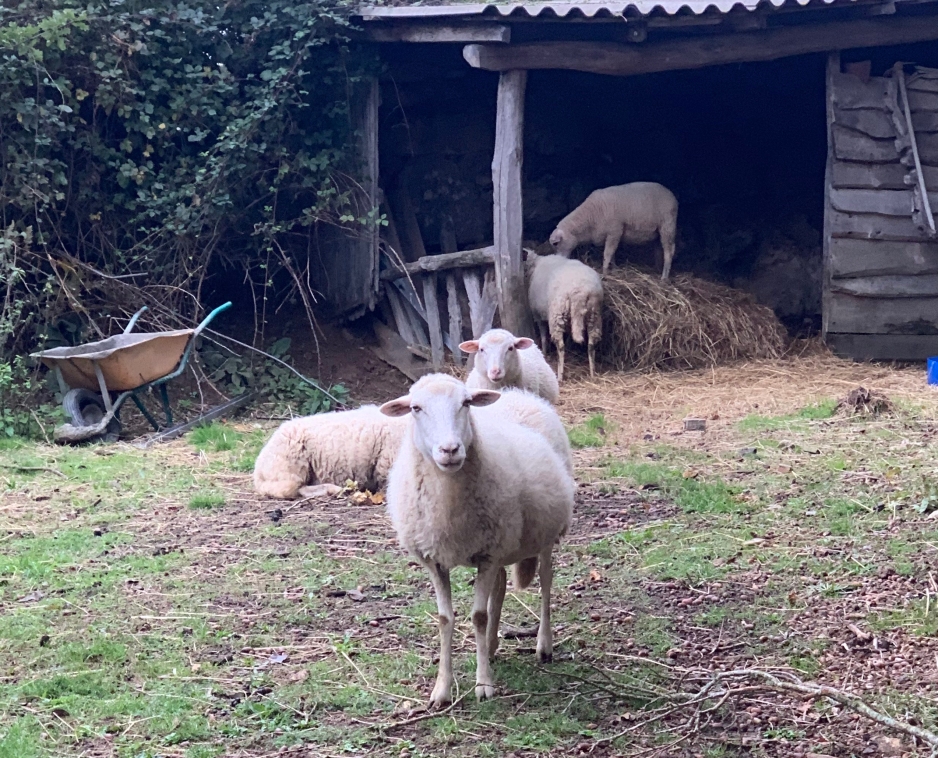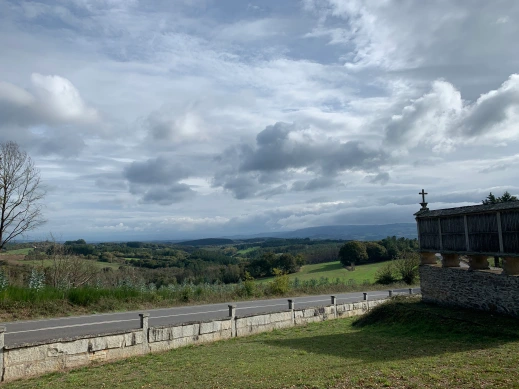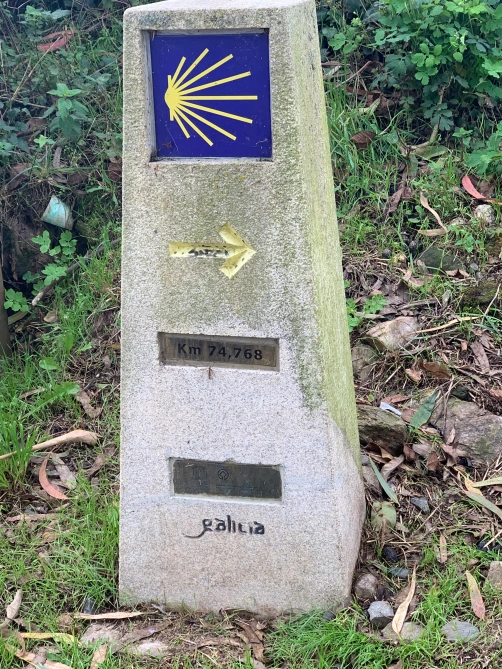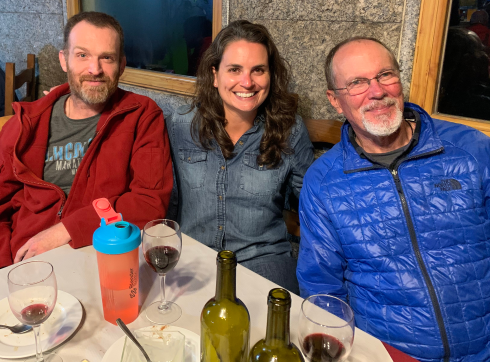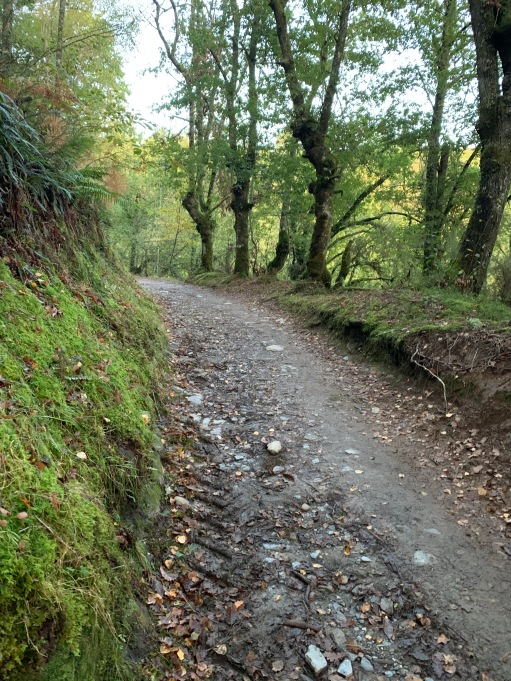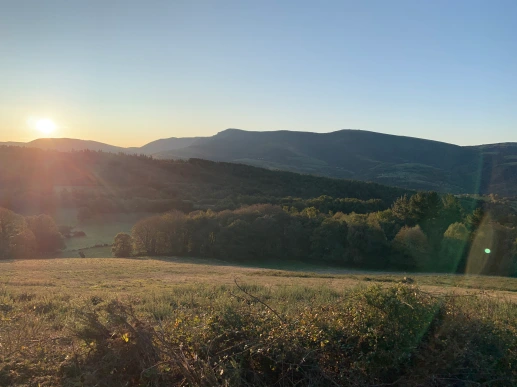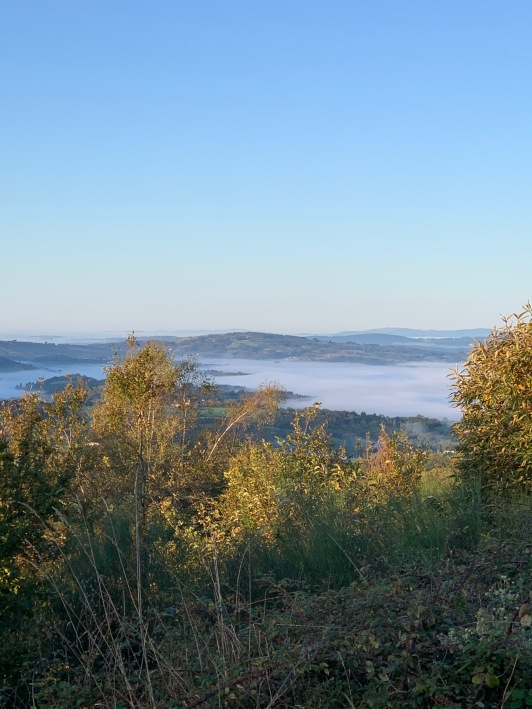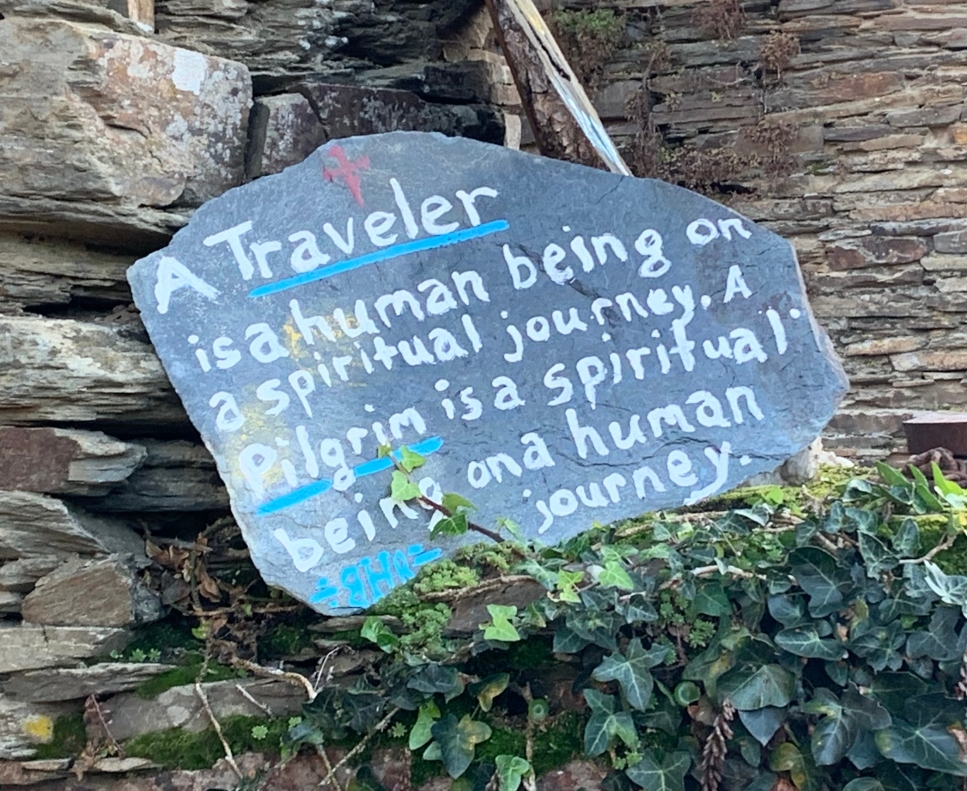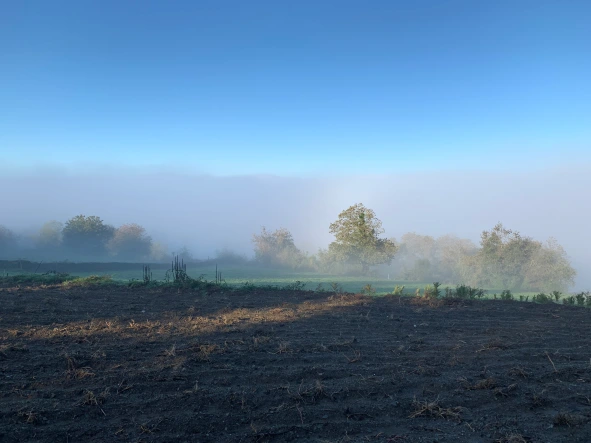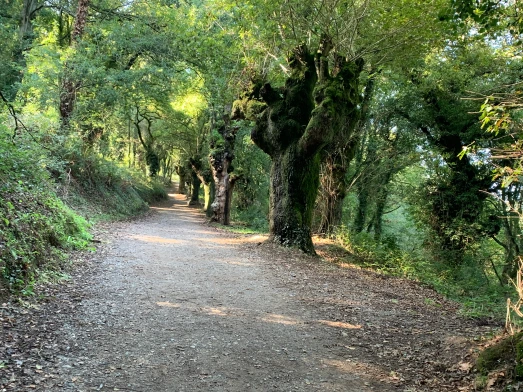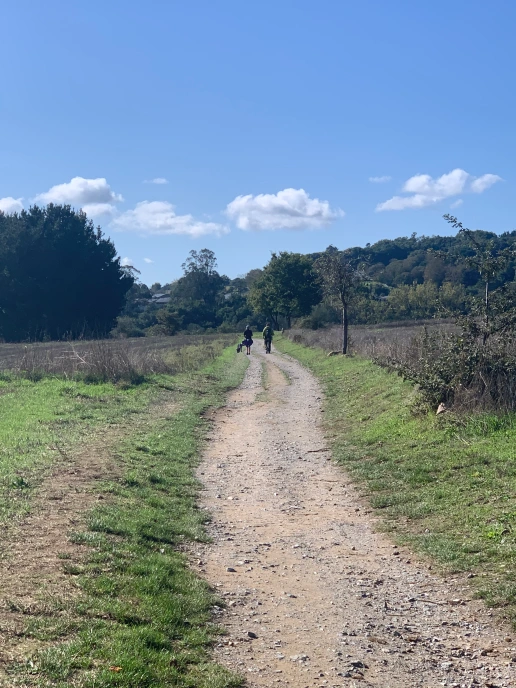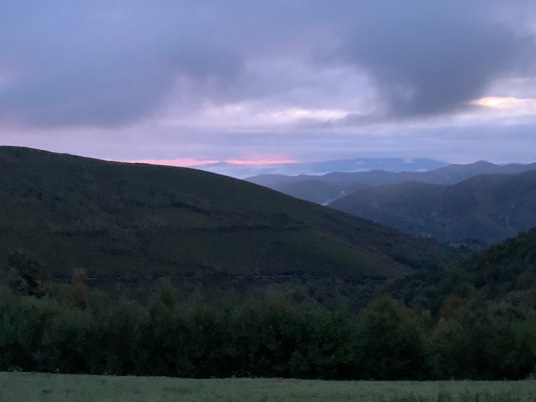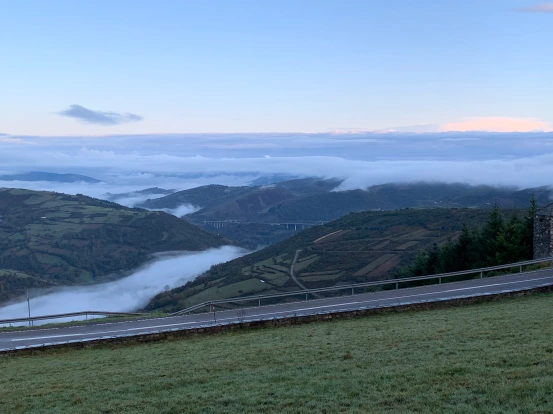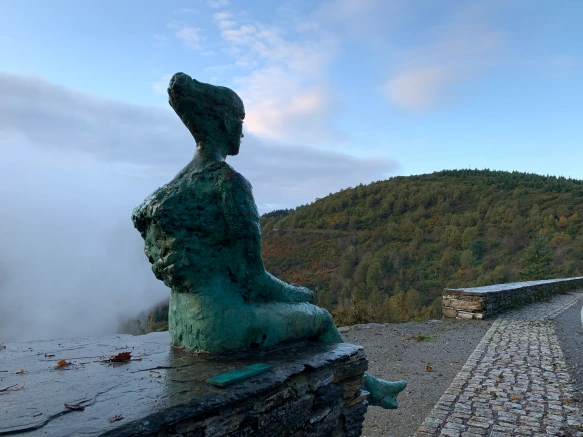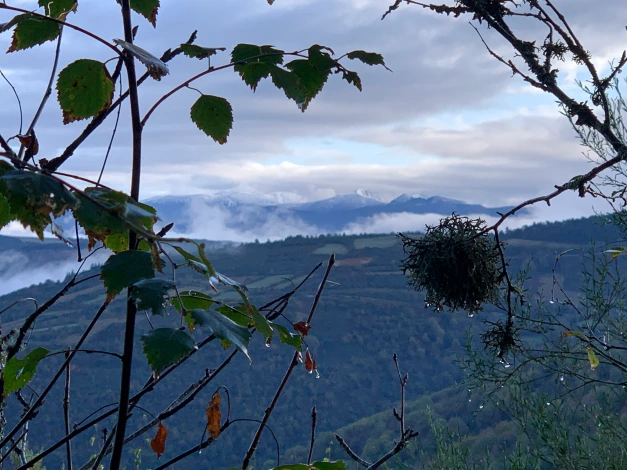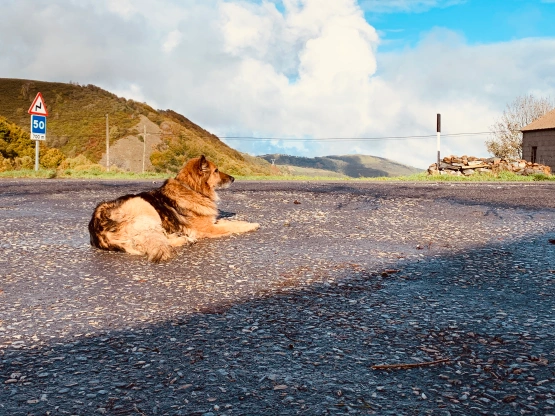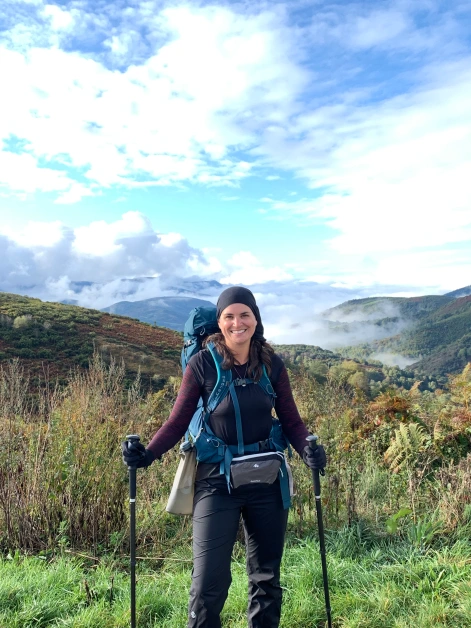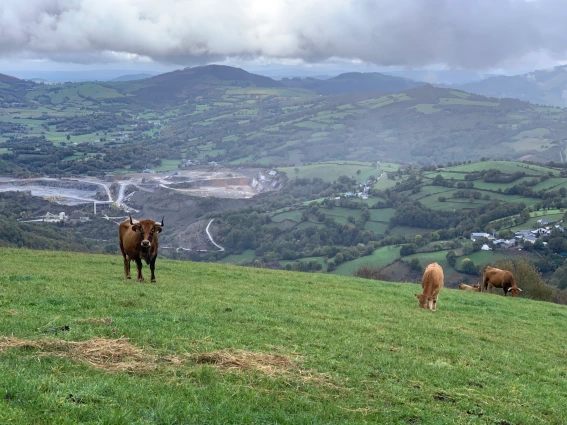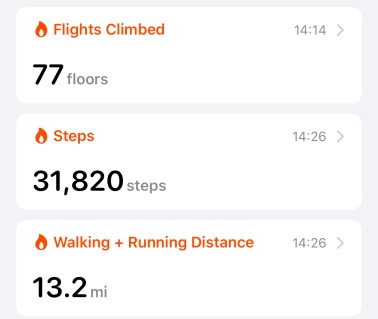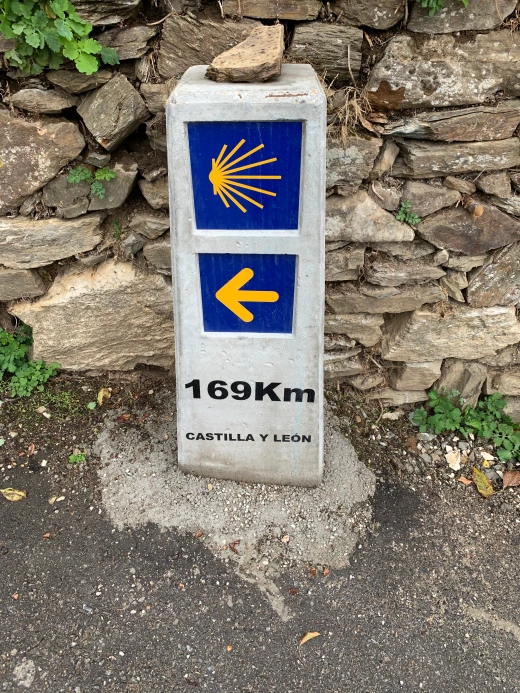Distance travelled: 28 kilometers
An alternate title for this post could be, “Halloween on the Coast of Death, at the End of the World.” While dramatic, it is no exaggeration. This was Halloween; this section of the Atlantic coast is called the Coast of Death; and, as explained previously, Fisterra translates to “end of the earth” or, said differently, “end of the world”.
It was also the end of my Camino in Spain.
I began walking once there was faint light. Another day of walking in the rain awaited.

To Fisterra
Not long out of town, I got my final climb of the Camino. There was a nice, sustained hill for about 20 minutes. The first few hours of the walk mostly took me through forest, which looked remarkably appropriate for Halloween.
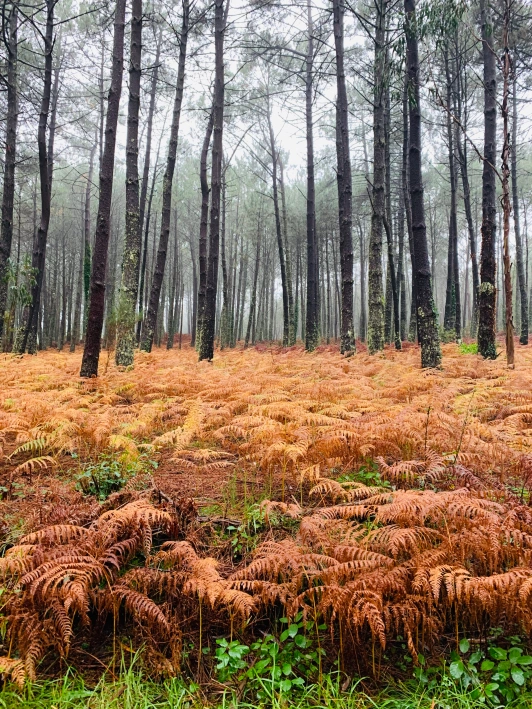
It was a tough walk because there was only one place to stop in the entire 28 kilometers – about halfway between the two towns. I got a coffee and escaped from the heavy mist, then continued along the coast for a while.

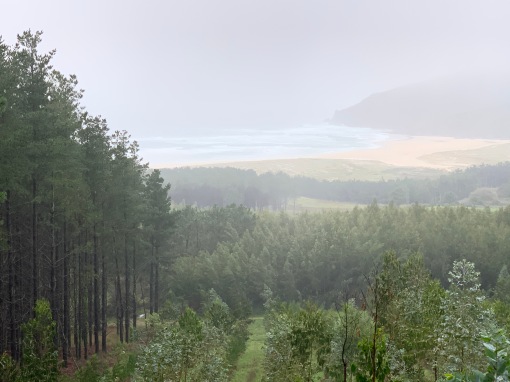
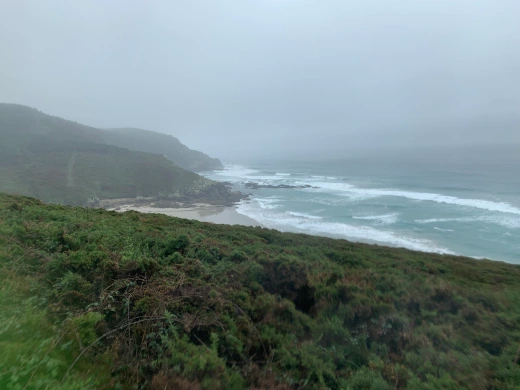
The second half of the walk was extremely difficult for me.
It began with feeling uncertain of the way. For a long stretch coming out of the town at the midway point, there were suddenly no signs, and no other pilgrims. I felt instinctively that I was heading in the right direction, and I was, but I got no validation of that for a long time – I think over half an hour.
Although the scenery was beautiful, and I’ve been a lover of the ocean all my life, it couldn’t make up for the fact that it was now raining quite hard. At one point, the rain was nearly horizontal. I was also hungry and tired, and I couldn’t tell how far I had to go – the route markers between Muxía and Fisterra no longer count down the kilometers for you since one marker serves the trail in both directions.
On top of that, I was in a lot of pain. A weekend in Santiago free of walking had not been enough to rest after the strain of the three very long final days into Santiago, and this was the third of another string of long days. (When I reached Fisterra, I’d walked 225.7 kilometers in my past seven days of walking – that’s 140 miles.) My feet (which were, of course, wet) and my hips hurt with each step I took, and today even my back was feeling tired.
As I approached Fisterra – at seemingly a snail’s pace – I started to think, “why did I do this to myself?”
I grew increasingly angry and frustrated. After all: wasn’t I on the Camino at this moment because, ultimately, I was spectacularly burned out after a couple of tough years in Big Law? You wouldn’t be wrong to question whether walking 900 kilometers is physically advisable at such a time. What on earth had made me think that, after walking 779 kilometers to arrive in Santiago, I needed to walk another 121 kilometers in four days?
When the answer came, I knew it was the reason the Camino had pushed me to choose to do this rather than go to Portugal with Lou and Shawn.
Why had I done this to myself? For two very simple and obvious reasons:
- As I’d learned from finding out my enneagram type in La Faba, I’m extremely motivated by external validation. I wanted to be able to say – for others, not for myself – that I had walked all the way across Spain. I wanted that glory.
- By the same token, I’m not a fan of backing down on a goal to which I’ve committed. Deciding not to walk to the coast would have felt like failure. I always rise to a challenge, unless I have a very good reason to decide not to.
Recognizing these reasons led to a couple of extremely important conclusions, and when I think about lessons of the Camino that have stayed in my mind and truly influenced my decisions in the past few months, these are the first that come to mind.
Consistently rising to the challenge has made me very successful in numerous ways, but it comes with a cost. This was not the first time in my life I’d been burned out, and I’ve struggled with mental health in the past as well. But despite my longstanding awareness of my tendency to do this, I’d never had this opportunity to see such a quick connection between a bad choice and its correspondingly bad consequence. My body was tired, and walking to the coast could easily have caused myself serious injury, yet I did it anyway, and despite having spent a great deal of the past five weeks thinking about burnout and my need to make different choices! I had still been blind to the extent of this inadvertent tendency towards self-destruction until this moment! Deciding to walk to the coast proved that I will almost literally run myself into the ground because of how I prioritize external validation, competition, and achievement. The pain I felt in this moment was the Camino’s way of reminding me that I need to work – actively work – at taking care of myself, which starts with altering my motivations and priorities.
Changing habits that are not only life-long but also subconscious is not the work of days, weeks, or months. This will need to be my focus for a long time, and possibly forever. But I’ve been putting this into practice; as a result of my reflections on this last day, I changed my plans for my next professional pursuit from something that would have been very spiritually rewarding but otherwise a different version of a familiar story: long hours and high stress. Instead, I pursued a job that doesn’t involve “saving the world”, but it does offer a real chance of work/life balance and a few other things that also support the broader vision of the life I want to build for myself. It’s one step in the right direction.
Anyway, having this huge “aha!” moment didn’t suddenly make my pain, hunger, exhaustion, or frustration go away, but I did feel a sense of peace in having seen, once again and in rather a grand finale fashion, how the Camino continued to provide for me. I didn’t turn around from Negreira three days before because I felt there was a lesson to be learned; this was it.
Arriving in Fisterra was anti-climatic. I regretted not having stopped walking in Santiago just because my arrival there had been so glorious – the weather was fine, and I felt tired but so powerful. In Fisterra, it was raining AND foggy; I couldn’t see the ocean. And I felt anything but powerful! I dragged myself to the albergue where Sam and Rosa were staying, dropped my backpack, and then went to find the two of them. A nice lunch, glass of vermouth, and very engaging conversation turned my afternoon around.
I had six more kilometers of walking to do. Just like in Muxía, the route markers in Fisterra lead you to a point beyond the main town. In Fisterra, kilometer 0 is a lighthouse, at truly the furthest point of land. (Remember: this was where people thought the world ended before Columbus discovered America.) The lighthouse is three kilometers beyond town. I didn’t bring my backpack this time, but I did find the strength to do that walk.
For all these pictures below: you’re supposed to be able to see the ocean. It couldn’t have been more than 30 meters below!

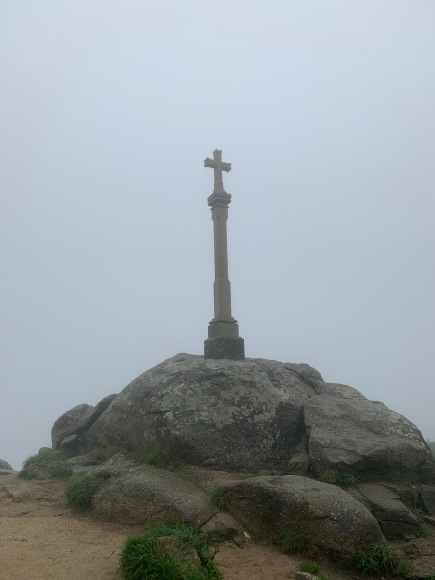

the path leading to the end of the earth…

Not really succeeding as a lighthouse today…
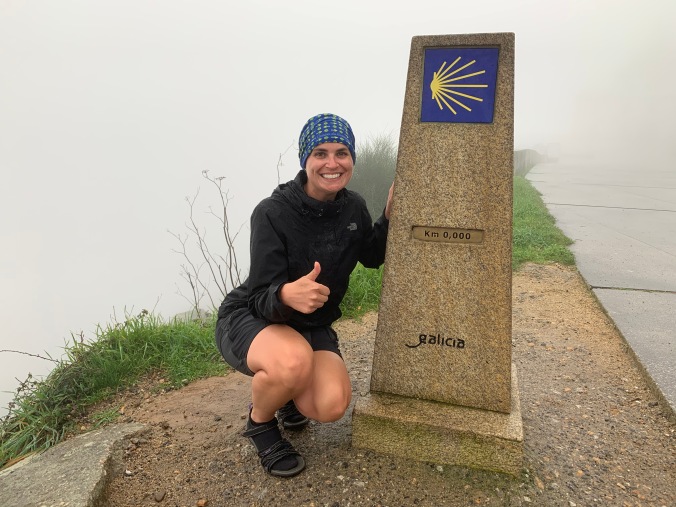
The second, and final, kilómetro 0!
Like arriving in Santiago, this was a surreal moment. I couldn’t believe that the next morning I’d board a bus and drive back to Santiago, covering all the distance I’d walked in a little over an hour. And after another weekend in Santiago, I’d be on my way back to Paris, and my time as a resident of Europe would really be down to final days. There was a lot to contemplate as I walked back into town.
I had one more thing to do before I called it quits for the day. I had to return one of Ramón’s painted stones to the ocean from which it came! I had it with me, and since I couldn’t actually see the ocean from the path (even though it was right there), I decided to throw the stone into the water from a point in town where I’d be able to see it hit the water.

As I’d done when laying my stone at the base of the Iron Cross, I took a moment to hold this one – which was so beautiful! – and reflect with gratitude on my encounters with Ramón and the many other pilgrims who’d crossed paths with me, once or continuously, and from whom I’d received so many lessons and so much love. I prayed for all of us and our safe return to our homes, where hopefully we’d find ways to translate the enlightenment of the Camino to our everyday lives, and the lives of those around us. I kissed the stone, and then I threw it as far as I could. Since I did this in an inlet, I’d like to think it’s still somewhere near when it landed.
Back at the albergue – and after getting caught in another downpour on the way home – I finally took a shower and discovered that I had a horrible rash on my thighs; my skin had had enough of spending hours in the rain! As per usual, other pilgrims came to the rescue and provided something like a diaper rash cream for me to slather on before we went to dinner, which was a three-course pumpkin feast at a very hippie albergue on the other end of town. It was really delicious: we had pumpkin soup, pumpkin risotto, and finally something like a pumpkin bread/cake. Plus wine, of course, and lively music! It was a super fun way to end what had been a very emotionally charged day.




